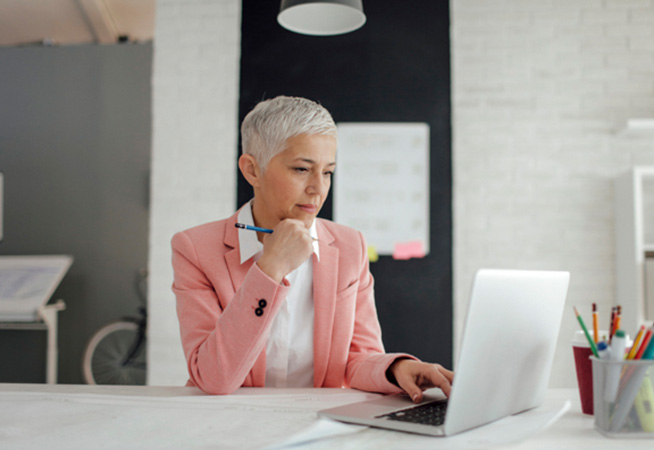Written by William M. Adkinson, Vice President, Fixed Income Manager, Equity Analyst, Portfolio Manager
As a manufacturer, your business runs on fuel, literally and figuratively. But due to increased energy demand as economies recuperate from the pandemic, combined with oil production being slow to ramp up and reduced oil refining capacity, the world is experiencing an energy crunch—and many business owners are feeling the effects.
Particularly for oil-dependent industries, navigating an inflationary environment presents a challenge—but there are ways to mitigate the impact. Let’s take a deeper look at why prices are rising to begin with, and the steps manufacturers can take to cushion the ongoing effect of inflation.
The root cause of rising oil prices
Pandemic shutdowns in 2020 put a halt to businesses throughout the world, impacting the demand for both oil and refined oil products, such as those used in and for manufacturing companies. As lockdowns loosened and manufacturing came back online, the reduction in U.S. and global refinery capacity triggered massive price increases for oil-derived products.
and global refinery capacity triggered massive price increases for oil-derived products.
Reduced refinery capacity is the core of our issue — not leasing, drilling or transporting. Consider that the U.S. has not built a new refinery in around 50 years due, in part, to rising costs but mostly to regulatory and environmental concerns. On top of that, the expansion of the electric vehicle fleet, vocal governmental opposition to fossil fuels here and in Europe, and an anticipated peak in gasoline demand have contributed to investor uncertainty. Refiners are understandably hesitant to invest billions long term to build new or refurbish older refineries.
In the U.S., refinery production decreased from 19 million barrels per day (BPD) in 2020 to just 17.9 million BPD at the start of 2022. This was the result of storm damages in the Gulf of Mexico and permanent pandemic closures. Manufacturers looking to source alternative oil and refined products around the world had to contend with other challenges. In addition to pandemic shutdowns continuing unabated, increased worldwide regulatory and environmental pressures led global refinery capacity to decrease as well. The result is staggering: global refinery capacity has decreased by roughly 3.3 million BPD since the start of 2020.
The energy shortage further intensified due to near-global sanctions on Russian oil and refined products following the war in Ukraine. Other parts of the world that produce oil must quickly make up the deficit of Russian oil exports, which has proven challenging. After all, in December 2021, Russia exported 7.8 million BPD.
What it means for manufacturers
Fluctuating oil prices are not new. However, this global series of challenges impacting domestic and global oil supply chains puts significant financial pressures on manufacturers that depend on oil for their operations. Today, the price of WTI crude oil is around $100 a barrel—more than double the price since 2020. The financial strain caused by this global deficit put on oil-dependent manufacturers is undeniable.
Future price reductions for refined products will greatly depend on when investments in new refineries in Asia, the Middle East, and Africa come online and increase global refining capacity. Additional energy supplies, regulations shifting demand away from oil, and an overall slowing global economy may further impact prices, but it will take time before the extent of these shifts is clear.
How to weather these financial challenges
It will take some time for additional energy supplies such as wind, solar, bio-fuels or even nuclear to come online globally to help reset oil prices. Even with green energy on the rise, we face another series of complex hurdles like building out the electric grid and maintaining reliable base load capacity. Keep in mind, there are other uncertainties affecting the petroleum industry — we don’t know whether the Russian sanctions will continue when the war in Ukraine is over, or their long-term effects.
As a manufacturer, we know you depend on oil to produce the value your customers expect. We’ve listed some options to consider that can help you stay competitive in the inflationary market we are experiencing today.
- Lock-in costs: Where possible, lock-in fixed prices on longer-term purchase orders. Vendors may be willing and better able to hedge the risk of rising costs, depending on their size.
- Manage inventory and consider a business loan solution: Stockpiling inventory is another effective way to lock-in costs. An asset-based line of credit is a flexible solution that can be used to help with any liquidity strain you may be experiencing.
- Evaluate shipping costs: Manage the shipping costs which have been dramatically impacted by rising fuel costs. Re-evaluate local vendors who don’t need to ship as far and negotiate to see if your customers will handle shipping. Larger buyers may have national trucking contracts that are more favorable than your shipping costs, and the discount they require to pick up your product at your dock may end up saving you money.
At First American Bank, we build client relationships for the long term. If your manufacturing business is challenged by high fuel prices, our business experts can help create a solution tailored to your needs. You’ll be paired with a senior lender with decades of experience who will take the time to understand your needs and come up with a plan to keep you moving forward.
Stay steady through shaky markets
















